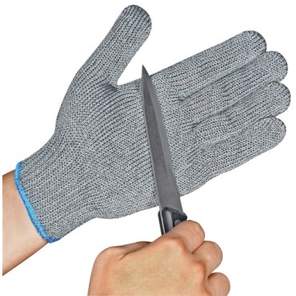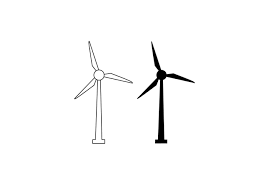Title Page
-
Company Name
-
Client / Site
-
Conducted on
-
Prepared by
-
Location
PPE Evaluation Form
-
Nature of work
-
Identify potential hazards at work (select all that apply)
- Eye/Face/Neck
- Head
- Foot
- Hand
- Back
- Fall
- Noise
- Respiratory
EYE, FACE, AND NECK HAZARDS
-
Safety glasses protect eyes from dirt, dust and airborne particles. The dangers associated with tire service are real and must not be ignore. Sun glasses are not design to protect the eye from the impact of projectile while servicing tires
-
Select all that apply for each hazard from the drop down list.
- Chemical Exposure
- Cut/Abrasions
- Dust/Flying Debris
- Dust Particulates
- Electrical Arc
- Electrical Shock
- Fall Hazard
- High Heat/COld
- Impact
- Impact/Compression
- UV/IR Radiation
- Noise Hazard
- Puncture
- Slippery/Wet Surfaces
- Other
- Strains/sprains
-
Description of Hazard
-
Required PPE
-
Does the equipment undergo testing and in a good condition?
-
Take a photo
-
Does the equipment fit perfectly?
-
Take a photo
HEAD
-
Servicing tires in areas in areas where equipment or materials are being used or operated overhead. working under a truck trailer or equipment where technician can bump his head
-
Select all that apply for each hazard from the drop down list.
- Chemical Exposure
- Cut/Abrasions
- Dust/Flying Debris
- Dust Particulates
- Electrical Arc
- Electrical Shock
- Fall Hazard
- High Heat/COld
- Impact
- Impact/Compression
- UV/IR Radiation
- Noise Hazard
- Puncture
- Slippery/Wet Surfaces
- Other
- Strains/sprains
-
Description of Hazard
-
Required PPE
-
Does the equipment undergo testing and in a good condition?
-
Take a photo
-
Does the equipment fit perfectly?
-
Take a photo
FOOT HAZARDS
-
Leather work shoes or boots with reinforced toe protection to guard against injuries to the feet from falling, rolling, dropping, slipping, compressing while servicing tires
-
Select all that apply for each hazard from the drop down list.
- Chemical Exposure
- Cut/Abrasions
- Dust/Flying Debris
- Dust Particulates
- Electrical Arc
- Electrical Shock
- Fall Hazard
- High Heat/COld
- Impact
- Impact/Compression
- UV/IR Radiation
- Noise Hazard
- Puncture
- Slippery/Wet Surfaces
- Other
- Strains/sprains
-
Description of Hazard
-
Required PPE
-
Does the equipment undergo testing and in a good condition?
-
Take a photo
-
Does the equipment fit perfectly?
-
Take a photo
HAND HAZARDS
-
Risks of cuts and punctures that comes with handling truck tires, rims and wheels, specially when exposed steel. OSHA 29 CFR 1910.138, Employers shall select and require employee's to use appropriate hand protection when when employee's hands are exposed to hazards such as those from skin absorption of harmful substances; severe cuts or laceration; severe abrasion; punctures; chemical burns; thermal burns; and harmful temperature extremes.
-
Select all that apply for each hazard from the drop down list.
- Chemical Exposure
- Cut/Abrasions
- Dust/Flying Debris
- Dust Particulates
- Electrical Arc
- Electrical Shock
- Fall Hazard
- High Heat/COld
- Impact
- Impact/Compression
- UV/IR Radiation
- Noise Hazard
- Puncture
- Slippery/Wet Surfaces
- Other
- Strains/sprains
-
Description of Hazard
-
Required PPE
-
Does the equipment undergo testing and in a good condition?
-
Take a photo
-
Does the equipment fit perfectly?
-
Take a photo
-
REFERENCE: Gloves are resistant to cuts ANSI approved
BACK INJURY HAZARDS
-
Handling, Servicing, Stacking, Lifting truck tires
-
Select all that apply for each hazard from the drop down list.
- Chemical Exposure
- Cut/Abrasions
- Dust/Flying Debris
- Dust Particulates
- Electrical Arc
- Electrical Shock
- Fall Hazard
- High Heat/COld
- Impact
- Impact/Compression
- UV/IR Radiation
- Noise Hazard
- Puncture
- Slippery/Wet Surfaces
- Other
- Strains/sprains
-
Description of Hazard
-
Required PPE
-
Does the equipment undergo testing and in a good condition?
-
Take a photo
-
Does the equipment fit perfectly?
-
Take a photo
FALL HAZARDS
-
Working on raised surfaces of 4 feet or morel; ladder use
-
Select all that apply for each hazard from the drop down list.
- Chemical Exposure
- Cut/Abrasions
- Dust/Flying Debris
- Dust Particulates
- Electrical Arc
- Electrical Shock
- Fall Hazard
- High Heat/COld
- Impact
- Impact/Compression
- UV/IR Radiation
- Noise Hazard
- Puncture
- Slippery/Wet Surfaces
- Other
- Strains/sprains
-
Description of Hazard
-
Required PPE
-
Does the equipment undergo testing and in a good condition?
-
Take a photo
-
Does the equipment fit perfectly?
-
Take a photo
NOISE HAZARDS
-
Noise levels above 85 dBA; working around pneumatic equipment; using powered hand tools
-
Select all that apply for each hazard from the drop down list.
- Chemical Exposure
- Cut/Abrasions
- Dust/Flying Debris
- Dust Particulates
- Electrical Arc
- Electrical Shock
- Fall Hazard
- High Heat/COld
- Impact
- Impact/Compression
- UV/IR Radiation
- Noise Hazard
- Puncture
- Slippery/Wet Surfaces
- Other
- Strains/sprains
-
Description of Hazard
-
Required PPE
-
Does the equipment undergo testing and in a good condition?
-
Take a photo
-
Does the equipment fit perfectly?
-
Take a photo
RESPIRATORY HAZARDS
-
Handling/using highly hazardous chemicals; tasks that generate dust and/or fumes; cutting, brazing on certain metals (stainless steel);
-
Select all that apply for each hazard from the drop down list.
- Chemical Exposure
- Cut/Abrasions
- Dust/Flying Debris
- Dust Particulates
- Electrical Arc
- Electrical Shock
- Fall Hazard
- High Heat/COld
- Impact
- Impact/Compression
- UV/IR Radiation
- Noise Hazard
- Puncture
- Slippery/Wet Surfaces
- Other
- Strains/sprains
-
Description of Hazard
-
Required PPE
-
Does the equipment undergo testing and in a good condition?
-
Take a photo
-
Does the equipment fit perfectly?
-
Take a photo
RECOMMENDATION
-
State recommendations here
COMPLETION
-
Auditor's Full Name and Signature












